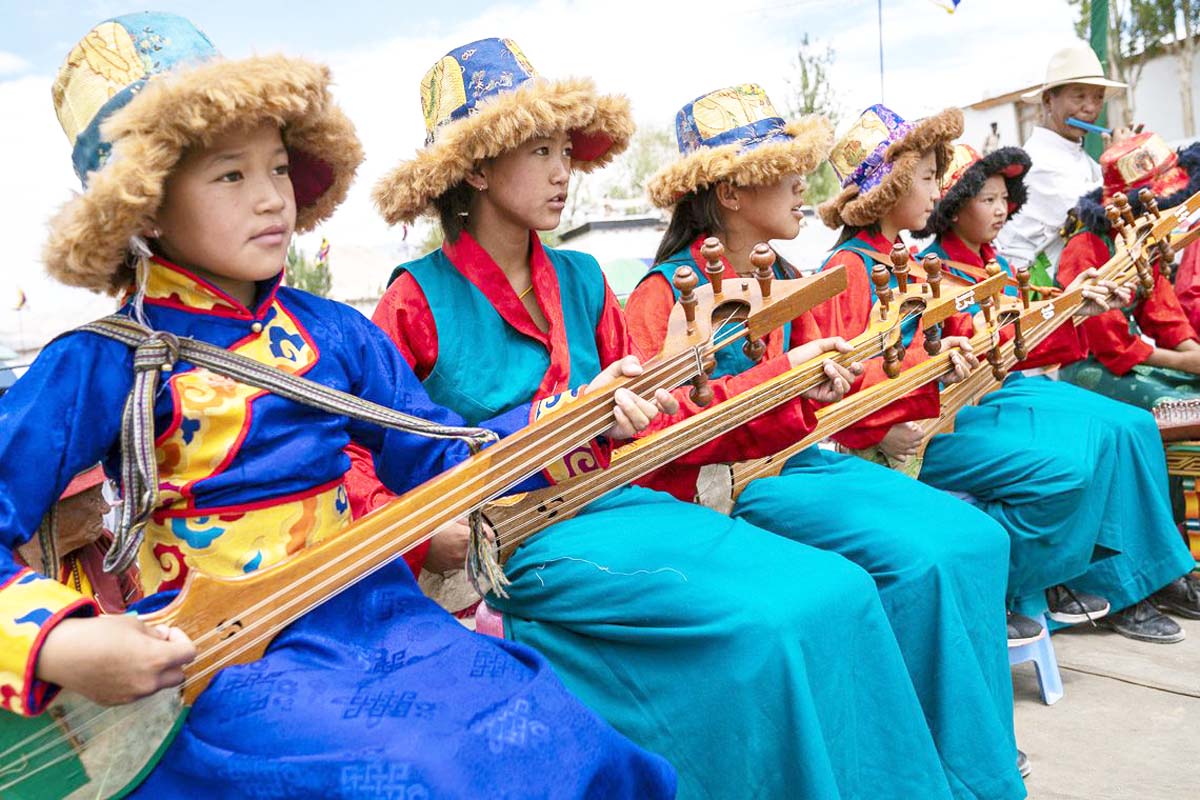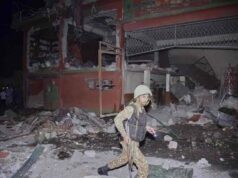Forgotten sentinels of Ladakh

By
‘Only as a warrior can one understand the path of knowledge. A warrior can not complain or regret anything. His life is a challenge, and challenges are not good or bad. Challenges are simply challenges to be overcome….A Tibetan saying.
Prior to world war 2, few countries aroused interest in themselves than Tibet. Tibet in fact was that last zone of neutrality lodged between 3 behemoths of Asia— India, China and USSR (Now Russia) a mighty classic buffer zone.
Topographically the boundaries were all but impenetrable. The inhabitants were said to be living in a self isolation mode jealously guarding their borders sealed off from foreigners. While the romantics envisioned a Shangri la, western countries particularly the USA took a pragmatic view.
Tibet was in fact a convenient vacuum, a blank space on the world map void of any prominent geographical landmarks and Geopolitical significance. But all this changed suddenly with Mao Tse Tung having successfully ousted Chiang Kai Shek and his nationalist forces from mainland China in 1949 and turned his attention to Tibet.
Ignoring Tibet’s claim of independence, the PLA (People’s liberation army of China) invaded Tibet and by 1956,had more or less gained complete control of the country. By 1959 the situation had become so bad in Tibet that Dalai Lama the spiritual head of Tibet along with 80,000 of his followers fled and sought political asylum in India.
On the western edge of this huge landmass /plateau of Tibet, is situated Ladakh of India, which often gives the visitors of a feeling of being in Mini Tibet, and worth remembering that Lhasa, the capital is just 1500kms from Leh. Ladakhi people share many aspects of their lives with their Tibetan counterparts viz ethinicity,religion—-The mystical Vajrayana form of Buddhism, crops….mainly barley, food such as barley based Tsampa flour and the slightly alcoholic chhang to name a few.
A piece of history that needs remembering is that it was not Buddhist Tibet that brought about a primarily Buddhist Ladakh, instead Buddhism travelled from India via Kashmir and Ladakh to Tibet. It was only in 13th century that Ladakh became, so to say subordinated to Tibet in religious terms. My interest in Tibetans settled in India more so in Ladakh was triggered by the fact that I had a close interaction with this race when I was in the army and had a stint in SFF (Special frontier force) the so called nucleus of Tibetan national army, officered by Indian army officers on deputation.
This interest in Tibetans took a fillip when during my course of interaction with them I came to know their trials and tribulations, as also their flight from Tibet in most humiliating and unceremonious manner overnight crossing hazardous terrains with Chinese border guards often hotly on their trail.
Following the Chinese occupation of Tibet in 1959, about 80,000 Tibetans fled their homeland along with their spiritual head the Dalai Lama.
At the request of the then PM Nehru various states leased lands to the Tibetans including J&K among them. Starting from Tezu in Assam,Tuting, Walong in Arunachal Pradesh, Manju ka tila in Delhi, Mungod in Karnatka and Dharamshala in Himachal to name a few, Tibetans have spread all over India and have to a large extent been Indianised too. It is also during this time that a sizable numbers of Tibetans started migrating to Ladakh coming to dominate all other older races here such as the Dards.
All these Tibetans have now settled in TRC’S (Tibetan refugee camps) spread over the length and breadth of India. But over the last 7 years or so the community strength has dropped by about 44% from around 1.5 lakhs in 2011 to about 85,000 according to the GOI data available from time to time, with most opting to migrate to US,UK and Switzerland.
One of the major reasons being that Tibetans are not officially recognized as refugees in India, but as foreigners. On top of it India has not signed the UN convention on refugees making their recognition as refugees all the more difficult.
There are about 7500 Tibetan refugees in Ladakh region, 5000 in Choglamsar on the outskirts of Leh town with rest about 2500 scattered around the nomadic region of jangthang and Sonamling area. The Tibetan settlement in Choglamsar area was started in 1960 with the blessings of HH Dalai Lama, who gave it the name as Sonamling Tibetan settlement.
All these areas are administered by home department of Central Tibetan administration and have agro based work, but due to harsh climatic conditions the produce is hardly worth the effort.
As far as NGO’s working here are concerned, its primarily the Tibetan youth congress and Tibetan women’s association for the upliftment of the community. The settlements invariably have an SOS children’s school and Mentseekhang Tibetan medical center which cater to basic medical emergencies in the camps.
The Sonamling settlement camp initially started with 617 inhabitants who were basically nomads from the western Tibetan region bordering Ladakh. The Sonamling Tibetan camp is a cluster of 11 scattered villages with each settlement known by a numerical.
In the Sonamling area,the camp number 3, is the capital/hub of all the administrative echelons to include the vocational training centers, cooperative societies, schools etc, making it the most sought after area.
The average distance between each settlement is about 3 to 4 kms,with the outermost being 13 to 14 kms away from the nodal center. Similarly the Jamthang settlement area was established in 1982 from nomadic groups of traditional herders who moved with their livestock in the initial years.
The Tibetan settlement at Changthang is located at 9 different places such as Hanley, Chumur, Sumdho, Niyma, Samedh, Puga, Kharnak etc to name a few. The whole area is at an elevation of about 3000 meters and is one of the least developed one. Being highlanders, the Tibetans have naturally large lungs with greater capacity to intake oxygen and hence adapt to Ladakhi terrain very easily.
Notwithstanding the above, the Tibetans have taken to Ladakh as their own home away from home. This community has always been at the forefront in guarding the frontiers of our country no matter what empire was ruling Delhi.
Their real worth was identified, and harnessed by the British during the early part of the Great Game in the early 19th century, when successive viceroys from Lord Dalhousie to Elgin to Lord Curzon placed unflinching faith and trust in them and employed them in scouting/reconnaissance and allied tasks across the mighty Karakorums, Himalayas and the Hindukush mountain ranges to survey the high passes, record the routes etc which a Czarist Russian army could undertake as part of their expansionist designs to advance into India, the Jewel of British crown.
Cut to the present times this community has proved its worth in the early days of Operation Meghdoot in the Siachen glacier area, when the Indian army was making its initial forays into the highest battle ground of the world. Even today a major portion of SFF is stationed there as’ Sentinels of the north’ keeping a hawk’s eye on the enemy.
Despite all these sacrifices in all the years gone by, the Tibetans have been repeatedly short shrifted by various governments of the day with their valor having gone more or less unrecognized and their existence depending upon the whims and fancies of the local administration under whose jurisdiction their settlements come.
Since their identity is under a cloud, even after 60 years of stay in India, consequently all the social benefit schemes doled out by the GOI doesn’t touch them even by a remote chance.
Though at the time of fleeing from his own homeland, His Holiness Dalai Lama on 17th of March 1959, had various options to choose from to take a political asylum, in so far as the country of refuge was concerned, but the fact that he chose India must have been guided by his sense of attachment for the religion he belonged to as well as the country of origin of the religion-india.
But what great travesty of justice that our country has under punched in providing succor to these hapless people at all stages of their stay here. Last but not the least the aim of my writing for this community was prompted way back in 1995/96, when on R&R (Rest and relief) after my Siachen tenure at Leh, I happen to visit the Choglamsar Tibetan camp to have a first hand view of their living conditions and came back utterly disenchanted by the way things were there. Any way as somebody has rightly said – After every dark night there is a bright dawn, hope GOI wakes up from its slumber and looks after its guests in the way they should be looked after.




